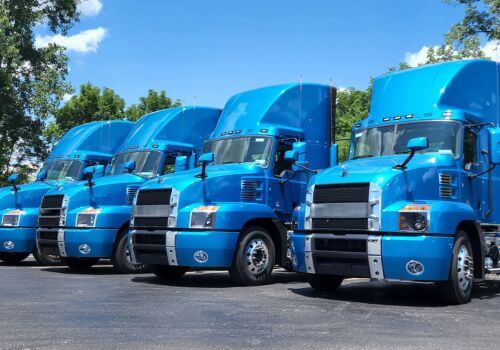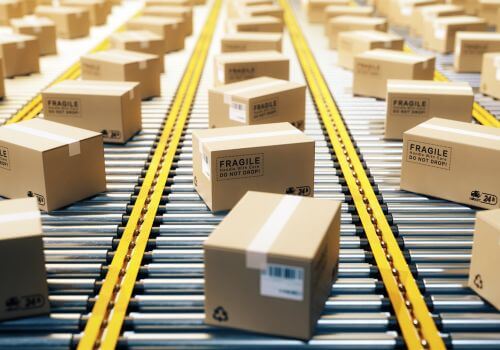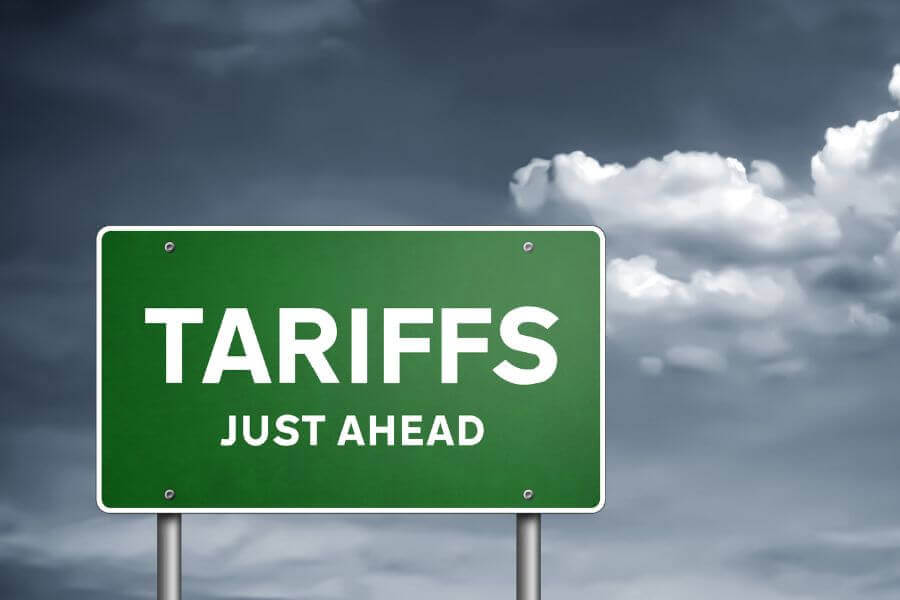In the fast-paced world of logistics, efficiency is the key to success. One of the essential strategies for optimizing inventory management and ensuring products reach their destination on time is the use of FIFO, or First-In, First-Out.
In this comprehensive guide, we will explore everything you need to know about FIFO within the logistics industry, from its definition and importance to its implementation and benefits.
What is FIFO in Logistics?
FIFO, or First-In, First-Out, is a fundamental inventory management method widely employed within the logistics industry. The basic principle behind FIFO is simple: the oldest items in inventory are sold or used first, ensuring that the goods with the earliest arrival dates are the first to be shipped or dispatched.
Why is FIFO Important in Logistics?
FIFO is of paramount importance in logistics due to its multifaceted benefits. It minimizes product spoilage and obsolescence, meets customer demand, optimizes warehouse space, and improves inventory accuracy. By implementing FIFO, logistics companies can reduce costs, enhance customer satisfaction, and streamline their operations, ultimately gaining a competitive edge in the market.
1. Minimizing Product Spoilage and Obsolescence
In the logistics industry, especially for businesses handling perishable goods or products with expiration dates, minimizing product spoilage and obsolescence is paramount. FIFO plays a crucial role in achieving this.
Imagine a scenario where goods are not managed following FIFO principles. The newer stock gets used or shipped before the older inventory. This practice can lead to a situation where older products, which are closer to their expiry dates, remain in storage longer than necessary. As a result, there’s an increased risk of these products spoiling or becoming obsolete.
FIFO prevents this problem by ensuring that the oldest items are the first to be utilized or dispatched. As a result, the goods with the earliest arrival dates are continually prioritized, reducing the risk of product wastage and financial losses due to unsellable inventory.
2. Meeting Customer Demand
Customer satisfaction is the cornerstone of any successful logistics operation. FIFO plays a pivotal role in meeting customer demand effectively and ensuring their contentment.
When customers order products, they expect to receive items that not only meet their quality standards but also have a reasonable shelf life. Imagine the disappointment and potential dissatisfaction if a customer receives a product that is close to its expiration date. Such experiences can lead to customer complaints, returns, and damage to the business’s reputation.
FIFO addresses this concern by guaranteeing that customers consistently receive items with the longest remaining shelf life. This practice not only meets customer expectations but also minimizes the likelihood of complaints and returns due to expired goods. Ultimately, it fosters trust and loyalty among customers.
3. Optimizing Warehouse Space
Efficient warehouse space utilization is a significant challenge in logistics. Overcrowded and disorganized storage spaces can lead to operational inefficiencies and increased costs. FIFO offers a solution by systematically cycling through older inventory.
In a FIFO system, older items are used or dispatched first, freeing up space for newer arrivals. This continuous rotation ensures that the warehouse is not burdened with an excess of older, potentially less valuable stock. It minimizes the available storage capacity, reduces the need for additional storage facilities, and streamlines the overall logistics process.
Businesses that implement FIFO effectively can minimize warehouse rental costs, enhance operational efficiency, and ensure a well-organized and accessible storage environment.
4. Improved Inventory Accuracy
Accurate inventory management is vital for logistics success. FIFO contributes to maintaining precise inventory records by aligning product usage with the order of arrival.
Without FIFO, the use of products may not follow a structured pattern, making it challenging to track inventory levels accurately. This can lead to two critical issues: overstocking and understocking. Overstocking ties up capital and storage space, while understocking results in missed sales opportunities and potential customer dissatisfaction.
FIFO helps prevent these problems by ensuring that older inventory is consistently used first. This practice facilitates better control over stock levels, reduces the chances of overstocking or understocking, and enhances decision-making regarding restocking and reordering.
5 Ways to Implement FIFO in Your Logistics Operations in 2023
In the world of logistics, where precision is paramount, implementing the FIFO method is a game-changer. From inventory classification to technology integration, the following implementations will help your business reduce spoilage, satisfy customers, optimize warehousing, and maintain impeccable inventory records, boosting efficiency and customer contentment in the logistics landscape.
1. Implement Inventory Classification
The foundation of a successful FIFO system lies in categorizing your inventory based on its arrival or production date. This process involves meticulously labeling or coding each product with a clear indicator of when it was manufactured or received. This step is crucial for maintaining the chronological order of your inventory.
For perishable goods, pharmaceuticals, or items with expiration dates, this step is especially critical. Ensure that all labels are easily readable, even in dimly lit warehouse conditions, to prevent errors during the picking and shipping process.
2. Improve Storage Organization
Efficient storage organization is key to FIFO implementation. Arrange your warehouse or storage facilities in a manner that facilitates easy access to older inventory. A common practice is to place newer stock behind older items on shelves or racks. This approach ensures that when your staff retrieves products for shipping or order fulfillment, they naturally select the oldest items first.
Additionally, consider using clear signage or color-coded systems to differentiate between different batches of inventory. This visual aid can help employees quickly identify and access the right products.
3. Conduct Regular Inventory Audits
Conducting regular audits is a vital aspect of ensuring that FIFO principles are consistently followed. Audits serve as checks and balances within your system, verifying that products are indeed being picked, shipped, or used in the order they were received.
During audits, assess your inventory records against physical inventory to identify any discrepancies, and pay close attention to any instances where newer items were used or shipped before older ones, as these indicate potential deviations from FIFO practices. By catching and rectifying such issues promptly, you can maintain the integrity of your FIFO system.
4. Train Employees
Properly trained staff is the backbone of successful FIFO implementation. It’s essential to educate your workforce on the importance of FIFO and train them in how to implement it effectively. Emphasize the significance of adhering to FIFO procedures in minimizing product spoilage, enhancing customer satisfaction, and optimizing warehouse space.
Training should encompass not only the theoretical understanding of FIFO but also practical applications in your specific logistics environment. Conduct regular refresher training sessions to ensure that your staff remains well-versed in FIFO practices.
5. Consider Technology Integration
In the digital age of logistics, technology can be a powerful ally in automating FIFO processes and maintaining accurate inventory records. Consider investing in inventory management software and technology solutions that are tailored to your business needs. These solutions can help automate inventory tracking, monitor product shelf life, and provide real-time alerts when products approach their expiration dates. They also assist in generating reports for auditing purposes, simplifying the process of verifying FIFO compliance.
Conclusion
In the fast-paced logistics industry, FIFO is a valuable tool for efficient inventory management. By prioritizing the use of older inventory, businesses can reduce product loss, enhance customer satisfaction, optimize warehouse space, and maintain accurate inventory records. While implementing FIFO may come with challenges, the benefits far outweigh the drawbacks, making it a must-know strategy for success in the logistics industry. Consider integrating FIFO into your operations to stay competitive and meet the ever-growing demands of your customers.
FIFO (First-in, First-out) FAQs
These FAQs provide insights into various aspects of FIFO, highlighting its importance and providing insights into the steps and challenges associated with its adoption in the logistics industry.
In which industries is FIFO commonly used in logistics?
FIFO is frequently employed in industries dealing with perishable goods, products with expiration dates, and those where product freshness is critical, such as food, pharmaceuticals, and retail.
What are the steps involved in implementing FIFO in logistics operations?
Implementing FIFO includes inventory classification, storage organization, regular audits, employee training, and possibly technology integration to automate processes.
What challenges might businesses face when implementing FIFO in logistics?
Challenges can include managing bulk commodities, ensuring employee adherence to FIFO principles, and considering technology costs for automation.
How does FIFO affect inventory accuracy in logistics?
FIFO helps maintain accurate inventory records by ensuring that products are used or shipped based on their chronological order, reducing the chances of overstocking or understocking.
What role does employee training play in successful FIFO implementation?
Properly trained staff is essential for FIFO success as they need to understand the importance of FIFO, its practical application in their specific logistics environment, and the significance of following FIFO procedures.
Is technology integration necessary for implementing FIFO in logistics?
While not mandatory, technology integration, including inventory management software, can automate FIFO processes, track inventory accurately, and generate reports for auditing purposes, streamlining the entire process.











